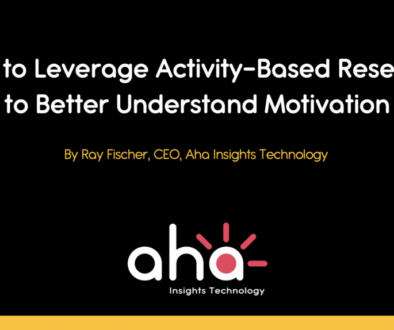Face-to-Face vs. Online Qualitative Research: Why do some marketing researchers continue to opt for F2F?
Here is a great article from Jim White of RealityCheck on online qualitative research vs. face-to-face. His observations are right on the money regarding why some marketing researchers continue to opt for F2F when online marketing research tools like Aha! are making life easier for brands, marketing research consultants, and ad agencies to create engaging consumer studies quickly and efficiently
Read on – Ray
There’s a steady rise in social media. A spread of high-speed internet. And, almost everyone uses some form of digital communication. But in spite of all that, a study has shown that only 6% of all qualitative research was conducted online last year.
I don’t get it.
I’ve been doing qualitative research for almost 20 years. I’ve spent much of my professional life on planes. I’ve moderated what seems like a million focus groups in a thousand different cities. I’ve shadowed consumers in stores, hung out with them at work, and followed them around their homes, camera guy and clients in tow. Don’t get me wrong: F2F fieldwork can be very interesting, bordering on exhilarating.
But, having adopted online and digital technology over the last few years, my colleagues at Reality Check and I are firm believers that the new generation of online qual offers some great advantages. To name a few; improving our reach and increasing the amount of real-time data we can collect and analyze
So why are over 94% qualitative studies being done F2F?
I have a few hypotheses.
Fear of the unknown
Many folks who commission qualitative research studies simply have no idea of what can be accomplished online these days. It’s remarkable. Before you assume you can’t achieve your qual research objectives online, talk to someone with expertise in digital qual and ask them how they’d approach your project..
Once bitten
Some of you may have tried what you think is online qual. What I mean is; you’ve done a bulletin board. Your project probably delivered bored respondents and superficial insights. No offense, but that ain’t online qual. That’s, well, a bulletin board.
Technology now allows us to execute just about any projective technique online and most work better online than in F2F settings. Guided imagery, collage building, journeying, storytelling are staples of qualitative research and work great in digital environments. Add to that the creative things you can do with photographic and video uploads and there’s little than can beat online qual for depth.
Yes, F2F is still viable. We do it every day and it works just fine. But, if you’re sticking with F2F because you don’t know much about online qualitative or because you tried a bulletin board once and were less than enamored, it’s time to take a closer look at what’s happening in the digital space of consumer research. I bet you’ll be surprised what can be done.
Or maybe you just like flying.




